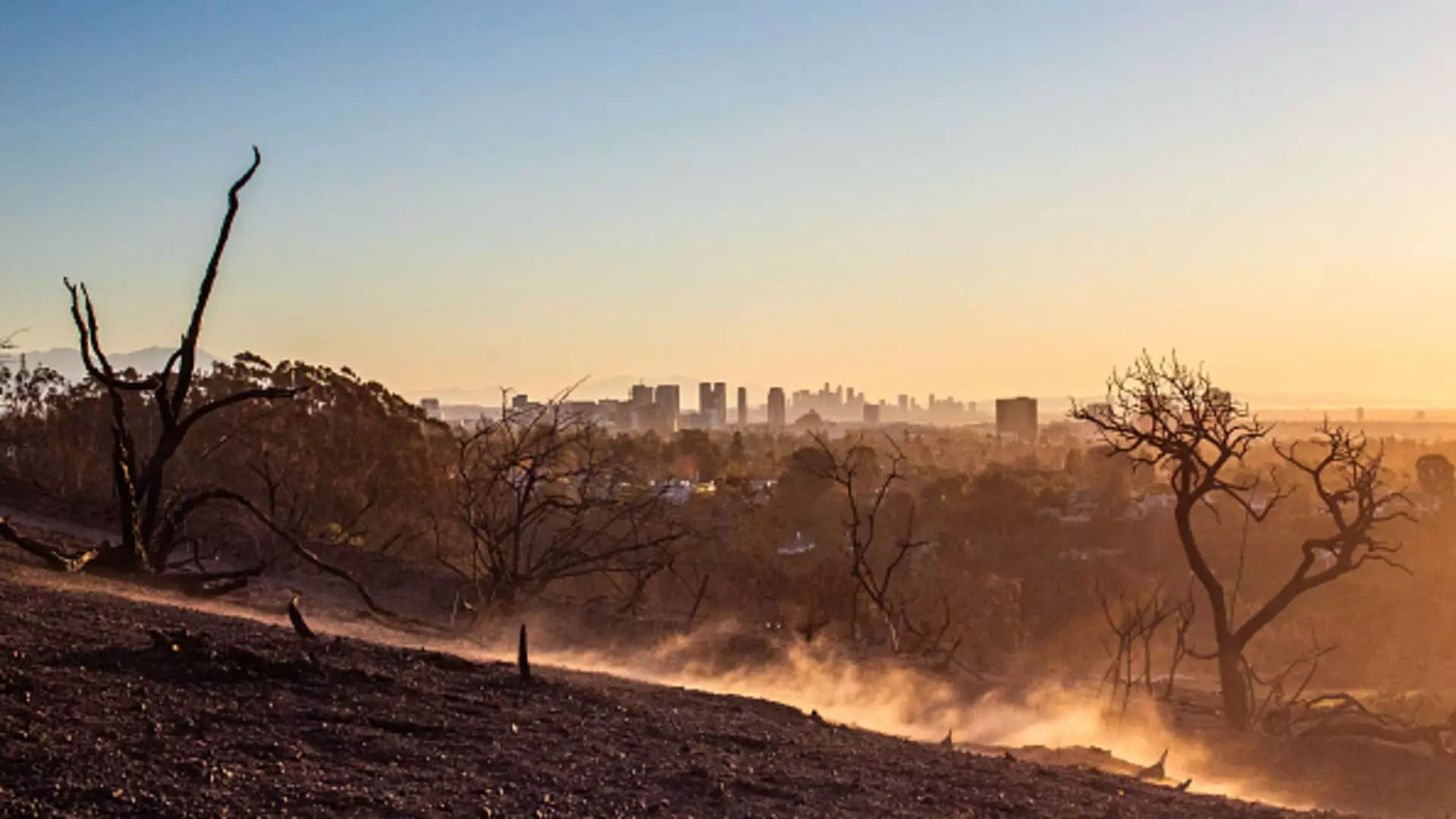The looming threat of catastrophic wildfires, particularly in regions like Southern California, has brought insurance issues to the forefront of public consciousness. Even before the recent blazes, insurance premiums were on an upward trajectory, a trend accelerated by the alarming frequency and severity of natural disasters. Analysts now predict that the current wildfires could potentially culminate in the highest insured losses in U.S. history, totaling over $20 billion as per estimates from financial powerhouses like JPMorgan and Wells Fargo. This staggering figure serves as a stark reminder that as disasters multiply, so too will the financial burdens placed upon homeowners.
For residents of California, the dynamics of homeowners’ insurance are particularly fraught. As the state grapples with increasingly severe weather patterns and the fallout from devastating wildfires, obtaining affordable coverage is becoming ever more challenging. Experts like Patrick Douville, vice president at Morningstar, argue for a risk-based pricing model, which could lead to significant rate increases in the short term. This shift in pricing strategy raises the specter of affordability crises that could, in turn, diminish property values and leave many homeowners exposed to the ire of uninsured risks.
The California Department of Insurance has recently enacted regulations permitting insurers to raise their rates in exchange for providing better coverage in fire-prone zones. Yet, this has not quelled the rising tide of premiums; some companies increased their rates by as much as 34% in 2024 alone, a scenario reminiscent of a never-ending financial carousel. Insured losses from a single wildfire claim can hike premiums by nearly 29%, and two claims can bump them up by over 60%. It’s a sobering calculation: as disasters strike, so too does the financial burden on homeowners.
While California may serve as a stark example, the implications of rising insurance costs extend beyond the West Coast. The understanding that homeowners in one state do not directly bear the costs of losses from another state reflects the complex regulatory landscape of the insurance market. Each state maintains its own insurance department, governing premium pricing based on local parameters, which theoretically protects consumers from nationwide trends in higher premiums.
However, the reality is more complicated. The interconnected nature of insurance markets means that insurers seeking to recoup losses in heavily regulated states often do so by increasing rates in less-regulated regions. Research from distinguished institutions highlights a growing discrepancy between insurance prices and the actual risks involved. This indicates a systemic issue that could threaten the entire insurance framework, especially if the frequency of natural disasters continues to rise.
In light of these developments, homeowners must navigate the changing landscape with awareness and proactive strategies. As noted by industry experts, the costs of rebuilding homes have surged dramatically since the pandemic, with estimates jumping from around $166 per square foot to over $300. As premiums climb, many homeowners may find themselves underinsured if they simply renew existing policies without reassessing the replacement cost of their properties.
It is prudent for homeowners to consult with insurance professionals or local contractors to reevaluate their coverage at least annually. An updated valuation not only ensures proper coverage but also provides peace of mind in turbulent times. Moreover, with the evident gap in flood coverage—where many homeowners remain inadequately insured despite distinct flood risks—it is crucial to obtain a separate flood insurance policy if necessary. Ignorance is a luxury that can no longer be afforded in today’s climate.
The situation in California and similar locales across the U.S. underscores a larger narrative about climate risks intertwined with economic consequences. Nationwide data illustrates how various environmental threats leave nearly half of all American homes vulnerable to severe or extreme damage. The National Oceanic and Atmospheric Administration reported 27 distinct natural disasters last year, each costing at least $1 billion. As the world continues to confront climate change, the insurance industry will likely face ongoing pressure to adapt to an increasingly dangerous landscape.
With escalating costs, higher premiums are likely to remain the norm. The average annual expense for homeowners’ insurance is now at an all-time high of approximately $2,181 for those with a $300,000 dwelling limit. The undulating landscape of homeowner’s insurance demands adaptation and vigilance, as rates are bound to surge amidst a backdrop of natural disasters and climate realities.
Ultimately, it falls on homeowners and insurance firms alike to reassess risk and ensure that one of their most significant investments—homeownership—remains protected against the elements of an unforgiving natural world.


Leave a Reply